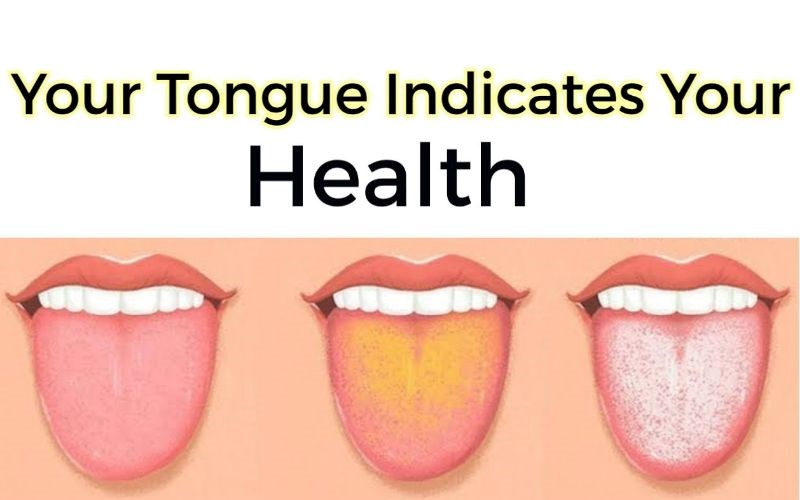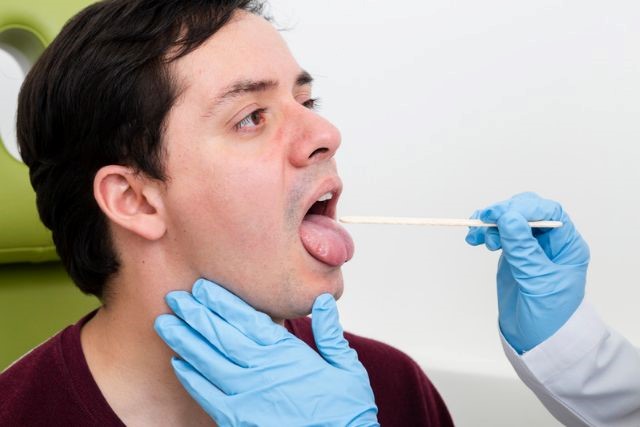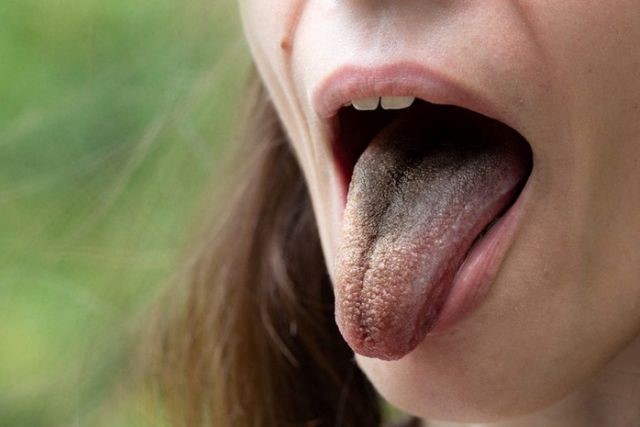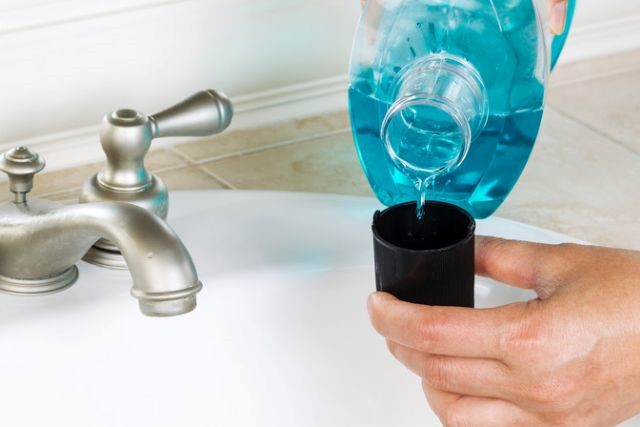What Your Tongue Says About Your Health

When doing the maintenance for dental health, people often neglect the tongue. Though it may seem harmless and some sources on the internet may even suggest that the tongue is a self-cleaning organ, it is actually quite important to clean it on the regular. The human mouth is a haven for bacteria, some good, some bad but when allowed to get cozy, these bacteria can attract larger problems while attacking, not just your tongue but also other vital organs.
The tongue is also an excellent indicator of overall health. The first thing that doctors usually do when a person is admitted to the Intensive Care Unit for issues like fatigue and fainting is to check for the possibility of anaemia which is usually traceable through the color of your tongue and gums.
On the more common side, an unhealthy or odd-looking tongue can often be a significant source of insecurity. After all, when you talk, people usually put most of their focus on your eyes or your mouth, which can make you feel conscious if you believe that the said part of your face is not well-maintained. To avoid landing in such nervousness-inducing situations, it is best to look after yourself and put emphasis on your dental, especially tongue health so that you can feel confident at all times without compromising on an important aspect of your well-being.


What Does A Healthy Tongue Look Like?
To be able to distinguish what a healthy tongue looks like from all the potentially unhealthy ones, you must keep the following pointers in mind:
- It is typically a fleshy pink color.
- In the scheme of colors, there is the possibility of slight variation from darker or lighter shades of pink.
- It has tiny but visible nodules on both the top and the bottom. These are known as papillae and are called “taste buds” in layman’s terms.
What Is An Unhealthy Tongue?
One of the most common and perhaps even primary noticeable symptoms of an unhealthy tongue can be observed when there is a significant change in color from the usual pink. Other indicators of an unhealthy tongue can be inclusive of pain and discomfort while chewing, gulping, or swallowing as well as textural differences such as new bumps and lumps.
Colours of An Unhealthy Tongue
Following are some colors that the tongue adopts when it becomes the victim of unhealthy issues. Below is also some information on different types of mouth/tongue-related problems accompanied by ways to treat them:
- White – The appearance of white patches and lines on the surface of the tongue is perhaps the most common issue that usually affects an otherwise healthy tongue. Some of the causes may be harmless in some cases while others may need careful medical attention. Potential causes can include oral thrush (treatable with antifungals), oral lichen planus (which happens when your immune system attacks the tissues in your mouth), leukoplakia (which has been linked to cancer), etc. While some of these conditions aren’t necessarily life-threatening, they certainly can cause great discomfort and are capable of escalating if left untreated. Hence, the smart thing to do would be to get your dentist’s professional opinion.
- Red – Increased redness with purplish hues on your tongue may not seem as troublesome as it actually is. This difference in color often looks like an extension slightly straying from the normal pink color of your skin but is accompanied by many problems that may not be obvious to the layman. While some of these are usually harmless like the geographic tongue (where the patches on the tongue adopt a maplike appearance), redness on the tongue can be an important indicator of Vitamin B deficiencies (manageable with folic acid ‘B9’ and cobalamin supplements ‘B12’), Kawasaki disease (causes frequent high fevers in children under 5 and strawberry-like texture on their tongues, can cause heart complications if left untreated; treatable with anti-inflammatory drugs) and scarlet fever (causes large bumps, sores on the tongue and often poses to be life-threatening if not treated promptly; treatable with antibiotics), etc.
- Yellow – If the cause of the yellowness on your tongue is anything but a turmeric-rich dish, it is likely a cause of concern. A heavy tinge of yellow on the surface of your tongue likely suggests extreme bacterial overgrowth, which may throw off the pH balance of your mouth and cause your tongue to experience acid reflux. Other causes of a yellow tongue include smoking, chewing tobacco, conditions like psoriasis, and jaundice in rare cases.
- Black – A tongue black in appearance is bound to look extremely concerning, especially when paired with a “hairy” texture, but it is harmless in most cases, the surface of the tongue adopts this color and sometimes the texture as well when there is an overgrowth of bad bacteria inside the mouth, mainly attacking the tongue. This is generally a result of poor oral hygiene and hence can be managed by improving one’s hygiene practices of the mouth.


Textures of An Unhealthy Tongue
Even if the general color of your tongue remains the usual, the possibility of other issues still exists. There are varying textures that could be present on the surface of your tongue which may not make it visibly seem like a problem (due to the lack of difference in its color) but can be extremely uncomfortable to experience. Here are some common textural changes, their causes, and treatments:
- Hairy – Due to excess production of protein, normal papillae bumps turn into longer hair-like strands, where tiny food particles often get stuck and give way for bacteria to multiply. For the most part, good oral hygiene practice and an effective tongue scraper are all you need for the “hair” to go away. However, if scraping doesn’t make the texture go away, it could be a signal towards the possibility of oral hairy leukoplakia. A hairy tongue can also be the result of people getting infected with viruses like Epstein-Barr or HIV. In such a case, one should visit their dentist and oral hygienist as the first step, followed by dental and oral tests and other diagnostic tests including blood work to ensure and confirm that there are no underlying conditions.
- Smooth – A tongue without any papillae on its surface may have a glossy pink appearance. It is generally prevalent in people with multiple nutrient deficiencies. Other causes may include infections of the mouth, celiac disease, or perhaps even side effects of medications that are prescribed for pre-existing conditions. If on the surface of your tongue, there are patches of smooth areas next to bumpy ones, it may suggest the possibility of a geographic tongue. The spots are usually not permanent, meaning they come and go, and can be painful since they may hurt or burn on occasion. The problem of a smooth tongue is largely harmless, but studies suggest certain linkages to conditions like psoriasis or lichen planus.
- Bumpy – The underside of one’s tongue is a very common spot for bumps like canker sores. They are reddish in color, tiny but very painful, and usually come & go on their own. These generally pop up whenever the tongue gets irritated. Certain viruses may also be the cause of these bumps on the tip or the sides of the tongue. Lumps under the tongue are rare and if one experiences pain that doesn’t seem to go away and last longer than two weeks, you must go to see a doctor and seek professional medical help, it is likely that your dentist will want to test you for different types of mouth-related cancers.
- Fissured – As one ages, deep fissures are likely to form on their tongue. Fissures formed due to old age are generally harmless. However, studies have linked fissures on the tongue to disorders and illnesses like Down Syndrome, Psoriasis, and Sjogren’s Syndrome. Maintenance of a fissured tongue can be done by gently using a soft-bristled brush on the tongue to clean food and bacteria. If there is an underlying condition that is the root cause of said fissures, the grooves may improve when the underlying condition is treated.
How to Keep Your Tongue Healthy?
After having all the many problems that an unhealthy regimen of tongue care can cause, it may be conceding and daunting to figure out how to keep it healthy and free from uncomfortable symptoms. Maintaining an optimal level of tongue health doesn’t have to be rocket science. Here are some basic but essential steps you must take in an effort to keep your tongue healthy:
- Avoid eating too many irritation-causing foods. Foods that are highly acidic in nature or high in spice level can affect your tongue just as much as they affect your digestive system. Eating foods with a flavor profile that is easier on your palette can help prevent tongue-related issues.
- Avoid mouthwashes and cleaning liquids that contain alcohol. Alcohol is a hard substance that is infamous for its drying properties. It is also a greatly effective agent which contributes to the pH imbalance of your mouth.


- Gargle with baking soda and warm salt water mouth rinses 1-2 times a week to keep away harmful bacteria and detoxify your mouth.
- Drink enough water. Drinking plenty of water is extremely important in ensuring your oral health stays optimal. Dehydration is often the primary cause for uneven textures and other issues that frequent your tongue, most of which can simply be solved by drinking an appropriate amount of water.


- Brush twice a day. Brushing both in the morning and at night may feel cumbersome to a lot of people but it is a great way to do away with the bacteria that feeds off of the food particles present in the mouth.
- Floss once a day. Flossing between your teeth makes sure no food particles stay stuck and make way for cavities that can house bad bacteria that are known to deteriorate the health of your tongue.
- Avoid smoking and eating tobacco. Both these practices have time and again been linked to multiple kinds of cancers of the mouth. Naturally, they’re terrible for your tongue health and can cause lumps, soreness, and most commonly discoloration on the surface.


- Consume a well-balanced, nutrient-rich diet. Since nutrient deficiencies are often the causes of conditions that affect your tongue to a great extent, ensuring that you are not deficient and/ or devoid of the essential nutrients, consuming a healthy amount of foods rich in these nutrients can help both prevent and treat discoloration and other similar symptoms caused due to the lack thereof.
- Visit your dentist and oral hygiene expert twice a year at least. Prevention is better than cure. This phrase stands popular and true because of the fact that the earlier you detect an issue, the easier it is to solve it, and that can only be done through regular check-ups by a licensed professional.
Summary
Oral health is an extremely important part of one’s well-being and self-worth. The tongue is an integral part of that. To ensure that your tongue remains healthy, you only need to take a few preventive steps, have a comprehensive oral care routine and inculcate a few good habits. This guide has all of that essential information presented compactly so that you have access to decent tongue health on the tip of your fingers.









